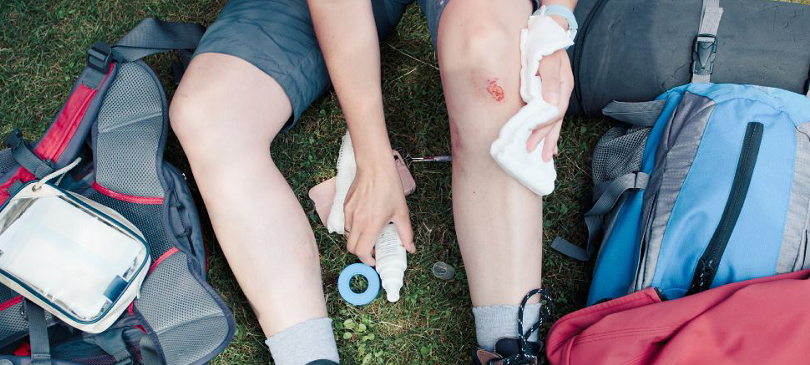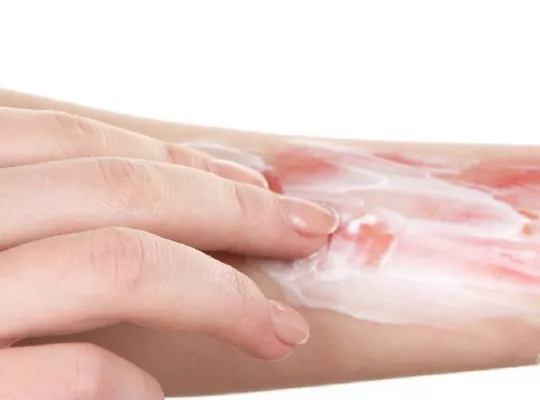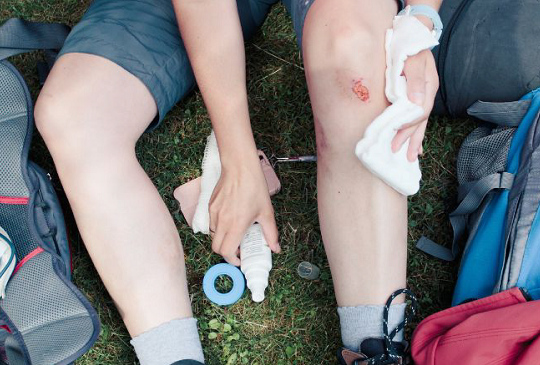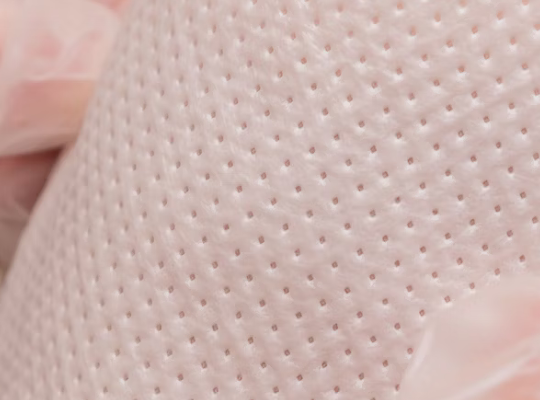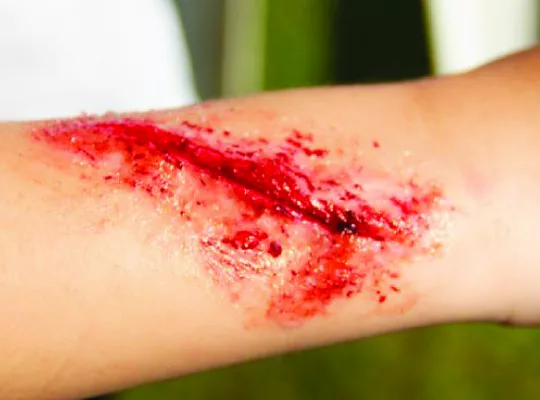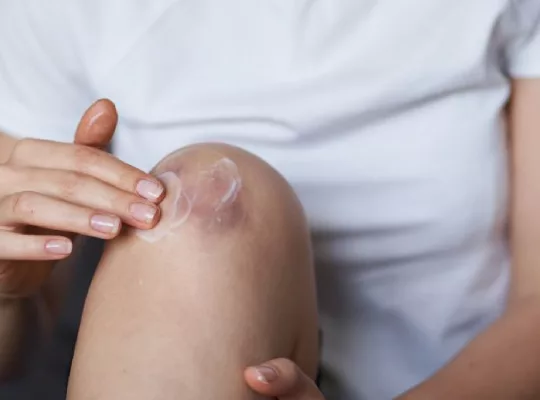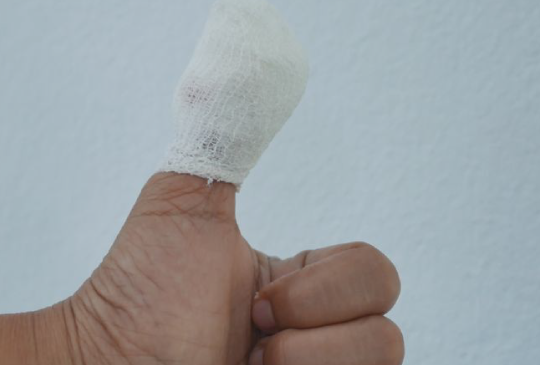When faced with an open wound, the wrong dressing can inhibit the healing process, but it can be hard to know which dressing is best used in different situations without proper medical training.
This said, everyone should have an understanding of treating minor injuries in order to avoid going to the hospital or emergency care when minor injury occurs.
It’s worth saying that certain open wounds should be left to the doctors, but smaller open wounds that aren’t particularly bad can be treated effectively at home. Always consult your medical professional if you aren’t sure.
In any case, here is our guide to the best dressings to use for different open wounds, so you can get back to your everyday life with a clear mind and a treated wound. Keep reading to learn more.
What Is A Wound?
Defining a wound itself can be helpful to treating it. A wound can be simplified to an injury that breaks the skin’s surface, or other bodily tissue.
An open wound is where the wound exposes the layers below the skin’s surface.
A wound can be anything from cuts, scrapes, scars, scratches, burns, punctured skin, opened blisters, and more.
A closed wound would be an internal wound that has not broken the skin’s surface but other bodily tissues within our body may have been ruptured, a closed wound is much harder to treat.
The Best Dressing For Different Wounds
Of course, the best dressing for an open wound is completely dependent on the type of wound, there’s no one answer. Here’s a breakdown of different wounds and the best dressing to treat them.
Semipermeable Film Dressings
When treating a superficial wound that has not necessarily punctured the skin’s surface but has grazed off some of its surface, a semi-permeable film dressing is the best dressing to help this wound heal.
These types of wounds are things like abrasions, lacerations and contusions. If you scraped your knee tape for example you should use a semi permeable film dressing.
A semi permeable film dressing is thin and flexible. It has an adhesive backing that adheres to the skin but allows for some movement due to less rigidity on the dressing.
There is a patch in the middle of the dressing that can protect and cushion the graze but has enough breathability in the dressing to allow the graze to heal quickly.
Impregnated Gauze
When treating things like burns that have affected the skin’s surface, often an impregnated gauze is used.
These are non woven sponges of gauze that are made to soak up medicated liquids that can treat things like burns.
An impregnated gauze might be soaked in liquid nitrofurazone in order to help treat a burn and allow it to heal. This is best left to a medical professional though.
Absorbent Dressing
An absorbent dressing is best used to treat lacerations on the skin, maybe for a surgical incision.
They are absorbent so are made to absorb small amounts of blood when a slow flow of blood is coming from a cut.
They are specifically good for cuts and other wounds that are more likely to continue bleeding as they heal.
An absorbent dressing can be self adhesive and require nothing more than sticking it on, while other absorbent dressings are non adhesive and require surgical tape to ensure adhesion to the skin’s surface.
The adhesive surgical tape are not that permanent. These surgical tapes can require some change throughout the day.
Gauze
Gauzes are a light material usually intended to help post surgical wounds heal, as well as deep wounds.
A gauze has a thin and loose open weave and is quite commonly used on top of other dressings to secure a variety of wounds.
A gauze can also simply be used temporarily to curtail the bleeding of a wound. They are non adhesive so can require some sticky tape to ensure they don’t come off and are adhered to the skin securely. For more benefit, you can use Non-Adhering Gauze which will allow wounds to drain freely into an absorbent dressing.
Alginate Dressings
An alginate dressing is derived from a loose fleece material, sometimes made from seaweed or other super absorbent materials.
They are intended to absorb 15 to 20 times their own weight in liquid and are ideal to treat wounds that are particularly leaky.
For instance a pressure ulcer, diabetic foot ulcer, cavity wound, leg ulcer, trauma wounds, and burns, can all be treated with an alginate dressing as the dressing can absorb any pus or blood or other liquid that could leak from these types of wound.
They are most commonly used in medical treatments though, but can be good to have at home.
Foam Dressing
A wound dressing is another type of dressing that can be useful in many situations. Namely, a foam dressing is made purely of foam.
Foam is very soft and can withstand some impact so can be ideal for certain kinds of wounds.
A foam dressing is particularly good for treating wounds when the patient might still be mobile and doing things, as the foamed padding helps prevent against wounds from being reopened.
Foam dressings can be adhesive, but usually aren’t and require sticky tape to ensure it is adhering to the skin.
Foam dressing is best for wounds such as skin grafts, surgical wounds, leg ulcers, burns, and particularly infected wounds that need to be untouched in order to heal.
Hydrocolloid Dressings
A hydrocolloid dressing is a quite unique dressing that is often used on wounds that should heal quickly.
A hydrocolloid dressing has two layers, an inner adhesive layer that absorbs exudate in order to form a hydrated gel over the wound itself.
This gel creates a moist and separate environment that can be really useful to protect wounds from infection while also allowing them to heal pretty quickly.
They are designed to be worn for up to a week before being changed, and allow the heat to stay near the wounded area to encourage healing.
A Hydrocolloid dressing can be ideal for wounded areas that are perhaps prone to infection.
A wound in a particular area near the groin or buttocks can be quite likely to be infected and these types of dressings are ideal as they ensure they don’t get infected by other bodily fluids.
They are also ideal for dressing that have high drainage and are great for managing drainage and protecting against infection.
Final Thoughts
As you can see, there are many different types of dressing out there, which can be suited for many kinds of wounds.
There is no answer to which dressing is best for general wounds, as each wound case should be treated individually and the best dressing is the one that suits a particular kind of wound best.
Luckily there are many dressings out there so you can easily find one that suits your wound, or a doctor will use their arsenal of dressings to treat your specific wound individually.
Frequently Asked Questions
This is a large misconception in the world of medicine. A wound should be dressed as much as possible in order to contain warmth, so that blood flow is encouraged.
Exposing a wound to air means it is colder and heals less quickly.

